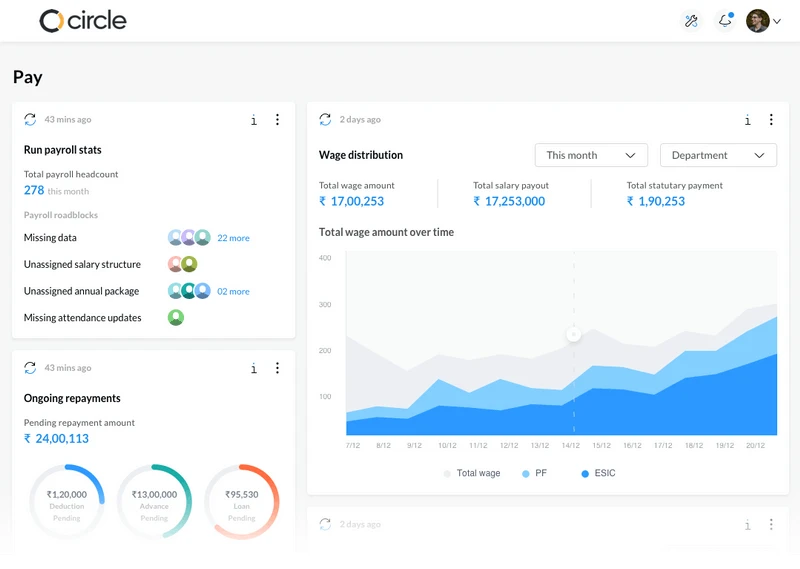Labour Welfare Fund (LWF) refers to a statutory fund wherein contribution is taken from both employers and employees. In some states, the government also contributes to the welfare fund. This fund is created and maintained for the workforce’s well-being.
The contributory fund was established to provide housing facilities, healthcare services, financial assistance, and recreational facilities to workers and their family members. Furthermore, the welfare scheme aims to nurture a sense of responsibility in the industry, making employers accountable for the welfare of their employees.
Each state has a State Labour Welfare Board that manages the Labour Welfare Fund. The Government of India established this fund through the Labour Welfare Fund Act of 1953; the Government of India’s Ministry of Labour is responsible for its administration. The act is currently executed in 16 states of India. The act requires the employer and the employee to make a specific financial contribution to the fund for the employee’s well-being.
LWF extends financial support to those who need it. Additionally, it aims to enhance the workers’ social security, living standards, and working circumstances.
Applicability of the Labour Welfare Fund (LWF)
The Labour Welfare Act applies to all businesses with a minimum of 5 employees. Currently, it is implemented in 16 states of the country. However, the contribution rate could vary depending on each state’s rules. The applicability of the deduction from the fund also varies on the employee’s designation and wages. Following are the Indian states and union territories where the Labour Welfare Fund (LWF) is applicable:- Andhra Pradesh
- Chandigarh
- Chattisgarh
- Delhi
- Goa and Diu and Daman
- Gujarat
- Haryana
- Karnataka
- Kerala
- Madhya Pradesh
- Maharashtra
- Odisha
- Punjab
- Tamil Nadu
- Telangana
- West Bengal
Objectives of the Labour Welfare Fund
- Improved Social Security
- Improved Working Conditions
- Scholarships and Housing Facilities
Benefits of the Labour Welfare Fund
Labour welfare is a comprehensive initiative and is not just confined to workplace premises. The scheme embraces many welfare activities aimed at offering comfort and an improved standard of living to employees and is offered over and above wages. This, in turn, leads to several benefits for both employees and employers, including the following:- Improves Industrial Relations
- Increases Employee Productivity and Income
- Boosts Employee Morale
- Creates a Permanent Labour Force
- Nurtures Mental Health
- Changes the Employer’s Outlook
- Imparts Social Benefits
Labour Welfare Fund (LWF) Expenditure
The amount accumulated in Labour Welfare Fund is invested in the following areas by the company board:- Arranging admissions to educational institutes for workers’ children
- Medical assistance for employees and their family members
- A transportation facility to ease the daily commute to work
- Music, dance, drama, games, sports, and other recreational activities to create a healthy, positive work environment
- Facility to avail housing loans at discounted rates
- Excursions, training, skill development, tours, travel, etc.
- Assisting women who wish to set up a side business and the unemployed
- Reading room and library facilities
- Nutritious meals for employees’ children
Contribution Towards Labour Welfare Funds
Contribution towards LWF is made by employers operating in industrial establishments. The contribution rate varies from one organisation to another. It greatly depends on the size of the employer’s business. Employers with less than 100 workers contribute 1% of their wage (including Dearness Allowance) to the fund; those with over 1,000 employees contribute 3%. Employers who earn more than INR 3,000/- per month contribute INR 12 towards the fund, and employees who earn up to INR 3,000/- per month must contribute INR 6. All these benefits are provided to employees by the company as a way of contribution, albeit the contribution rate and frequency may vary.Wrapping Up
The Labour Welfare Fund is now becoming an integral component of organisations. It fosters a healthy work environment and contributes to socio-economic development. It’s important to ensure compliance with the guidelines of the Labour Fund Act to avoid any undue penalties and fines. Human resource management needs robust payroll software for deductions, recording maintenance, database management, and other HRIS-related tasks to ensure adherence. sumHR is one of the best attendance and payroll software in India that ensures compliance with various acts, including the Labour Welfare Fund Act and its amendments. The biometric attendance system with payroll software also generates payslips and keeps track of all the regulatory requirements necessary for successfully implementing the Labour Welfare Fund Act.Frequently Asked Questions (FAQ)
How is the labour welfare fund calculated in salary
The statutory fund receives contributions from both the employer and the employee. However, the amount of contribution differs for them. For each employee, the employer is obligated to contribute twice or thrice the employees' contribution.
For example, if the employee contribution is 0.2% of the salary (subject to a limit of INR 25), the employer contribution will be twice the amount contributed by employees. A robust biometric attendance and payroll management system can handle such calculations while ensuring compliance with regulatory requirements.
For example, if the employee contribution is 0.2% of the salary (subject to a limit of INR 25), the employer contribution will be twice the amount contributed by employees. A robust biometric attendance and payroll management system can handle such calculations while ensuring compliance with regulatory requirements.
What do labour welfare expenses include?
Labour Welfare Funds provide a range of benefits to the employee, including financial assistance during unprecedented times, healthcare facilities, housing facilities, and educational and recreational facilities to labourers and their dependent family members. The fund is invested towards improving working conditions, the standard of living, and social security for the workers.








